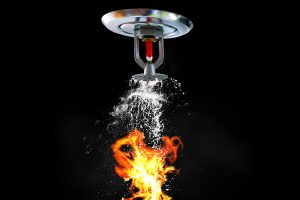Australian Building Codes Board (ABCB) announces new sprinkler rules

The Australian Building Codes Board (ABCB) has announced all new residential apartment buildings above three storeys built in Australia will now be required to have automatic fire sprinklers installed.
Under NCC 2019, newly-built residential apartment buildings over three storeys and less than 25m will require sprinklers under the Deemed-to-Satisfy (DTS) Provisions, going beyond the previous requirement for sprinklers only in residential buildings above 25m.
The change follows a fatal 2012 fire in a Bankstown apartment block that was not required to have sprinklers installed, which resulted in the death of one woman and the serious injury of another.
A subsequent coronial inquest found both women would have likely survived the fire without significant injury if the building had sprinklers.
The inquest set in motion a six-year collaborative project between the Australasian Fire and Emergency Service Authorities Council (AFAC), Fire and Rescue NSW (FRNSW), Fire Protection Association Australia (FPA Australia) and CSIRO to develop and propose effective, safe, fit for purpose sprinkler systems for medium-rise residential buildings.
AFAC president and FRNSW commissioner Paul Baxter is pleased the ABCB is implementing the research findings.
“The research results indicate that automatic residential sprinklers significantly improve the safety of occupants in the event of fire,” he says.
“They can prevent a fire from escalating, which may mean the difference between a minor incident and a major tragedy. The presence of automatic sprinklers also serves to reduce risks faced by crews when fighting fires in homes.”
